Daklak, a province nestled in the Central Highlands of Vietnam, is renowned for its vibrant culture and remarkably diverse cuisine. Home to various ethnic groups, each with their distinctive culinary practices, Daklak offers a tantalizing array of local dishes that blend tradition and innovation. From unique methods of preparation to the use of fresh, local ingredients, the food here showcases a rich tapestry of flavors. Visitors to Daklak are not merely eating; they are engaging with a culture steeped in history, celebrating the land's abundant natural resources, and experiencing the community's warmth through its heartfelt hospitality. The food tells stories of love, labor, celebration, and everyday life, making each meal a meaningful encounter.
Traditional recipes often have roots in the daily lives of the people, utilizing what is available and promoting sustainability. As we delve into the heart of Daklak's cuisine, we will explore traditional dishes, unique local ingredients, iconic cooking methods, signature dishes worth trying, and the best spots to savor them. This culinary journey promises to be as exciting as it is delicious.
Daklak's traditional dishes are not only nourishing but also embody the stories and customs of the indigenous communities. They reflect how food is intertwined with culture, heritage, and identity. Food-making in Daklak is often a community affair, where family members gather to prepare and share meals. This sense of togetherness enriches the diner's experience, as they partake in food that is as much about connection as it is about flavor.
Among the standout dishes is Thut Soup, a hearty powerhouse that represents the M'nong people's culinary traditions. This soup, created using bamboo tubes, features a ceiling of various local ingredients, including grilled dried beef skin, leafy greens, and a blend of spices. Each bite molds together textures and flavors that evoke the bountiful highlands from which they originate. Another iconic dish is Bamboo Tube Rice (Com Lam), where sticky rice melds with the freshness of bamboo, creating memories of outdoor feasts and family gatherings.
In the upcoming sections, we will delve into these dishes further, examining their significance, preparation methods, and the unique elements that make them emblematic of Daklak's rich culinary landscape.
Thut Soup, or Canh Thut, stands out as an essential dish cultivated by the M'nong ethnic group. This soup’s flamboyant flavors and thoughtful presentation are the epitome of comfort food. Traditionally, Thut Soup served practical purposes for the farmers laboring tirelessly in the lush fields. Utilizing bamboo pipes to hold rice and vegetables, they could savor their meals while remaining engaged in their daily routines a testament to the M'nong people's resourcefulness.
The preparation of Thut Soup is an art form involving meticulous attention to detail. The dish requires at least ten different components, resulting in a veritable cauldron of flavor that melds the sweetness of fresh vegetables with the heartiness of grilled meat. The primary ingredients typically include:
As each ingredient comes together, Thut Soup transforms into a comforting embrace of flavors that defines the M'nong identity. It’s also important to mention the cooking method employed: using bamboo pipes not only adds a rustic authenticity but also allows the dish to maintain a natural sweetness something many modern cooking methods fail to replicate.
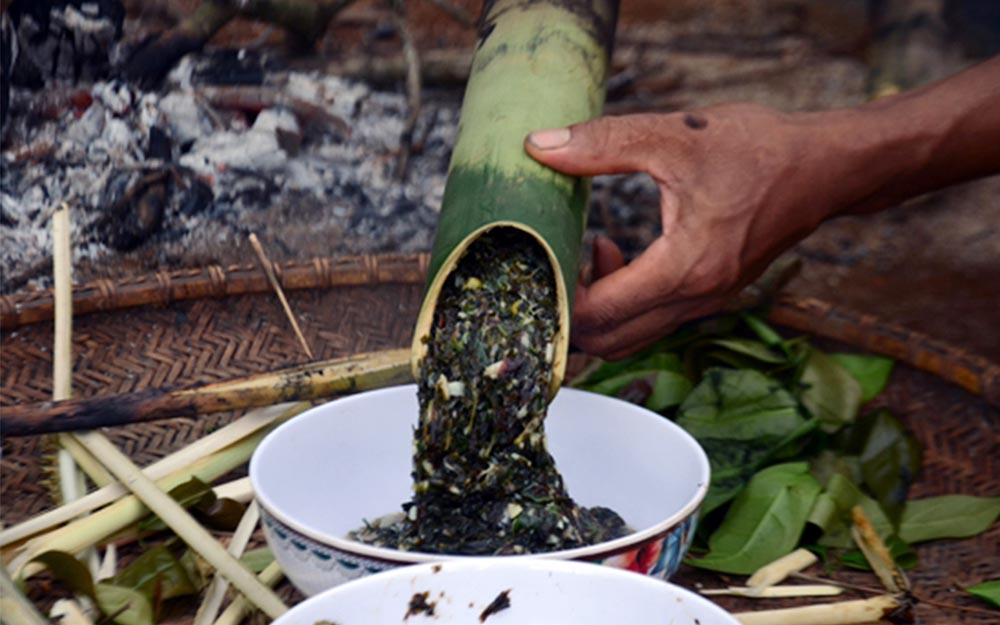
Bamboo Tube Rice, locally known as Com Lam, is a beloved staple in Daklak's culinary repertoire. This dish encapsulates the spirit of the countryside, where simplicity meets a rich sensory experience. The process begins with Khau Tan rice, known for its softness and aroma, often designated for special occasions.
Preparation is a fascinating ritual; the rice is soaked, then packed into fresh bamboo tubes, complemented by a specific amount of water approximately 10% essential for achieving the desired texture during cooking. Sometimes, a splash of coconut water adds an additional layer of flavor, resulting in an idyllic fusion that deeply resonates with the land’s natural produce. The bamboo tubes are then wrapped in banana leaves and delicately grilled over an open charcoal fire for about an hour. As the rice steams within the bamboo casing, it absorbs the subtle fragrances imparted by the bamboo and banana leaves.
When ready, the outer charred layers of the bamboo are peeled away, revealing the perfectly cooked rice, soft yet slightly sweet. Often enjoyed alongside grilled meats or sprinkled with salted roasted sesame, Com Lam possesses the capability to transport diners to traditional family gatherings, evoking nostalgia and warmth. The dish illustrates the harmony between nature and nurture, the essence of sustainability woven into every fiber of its preparation.
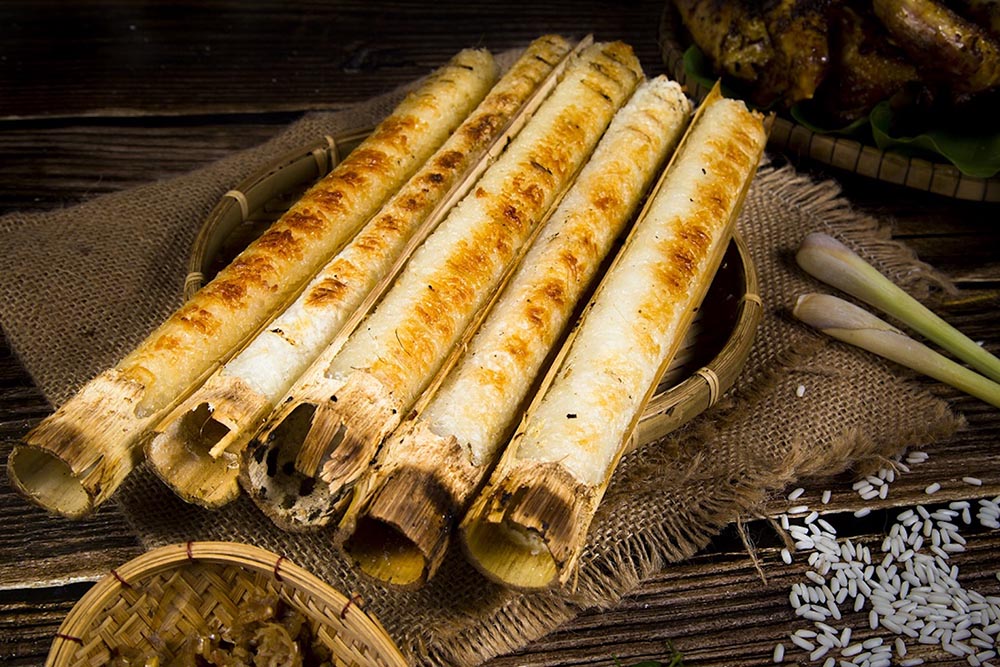
The ingredients utilized in Daklak's culinary landscape reflect the region's rich biodiversity and the unique cultural practices of its inhabitants. Central to these dishes are local freshwater fish varieties and distinctive herbs and spices that capture the essence of the Highlands.
Local ingredients are vital to enhancing the flavors of dishes previously discussed, and the juxtaposition of the regions' agricultural richness with modern culinary practices results in a delightful experience for anyone tasting these local creations. The upcoming sections will focus on these unique ingredients, particularly the freshwater fish varieties and specialty herbs and spices that flavors can be attributed to Daklak's signature dishes.
In Daklak, several local freshwater fish varieties contribute significantly to the culinary fare. Cá Lăng, or catfish, is a prime example and is particularly renowned for its firm texture and delectable taste. This fish is the star of many local dishes, with hot pot variations being particularly popular among both locals and visitors. The catfish's adaptability allows it to be prepared in delightful ways, whether grilled, fried, or simmered in savory sauces.
Another noteworthy fish species is the perch, scientifically known as Anabas testudineus. Known for its nutritional benefits and slightly chewy texture, perch is frequently featured in local dishes, often paired with a medley of aromatic herbs. When it comes to cooking, Daklak cuisine emphasizes the importance of freshness and simplicity, allowing the intrinsic flavors of these local fish to shine through.
Here are a few notable dishes using local freshwater fish varieties:
These recipes reflect the local culinary philosophy of using what is readily available, enhancing the communal experience when sharing a meal around the table.
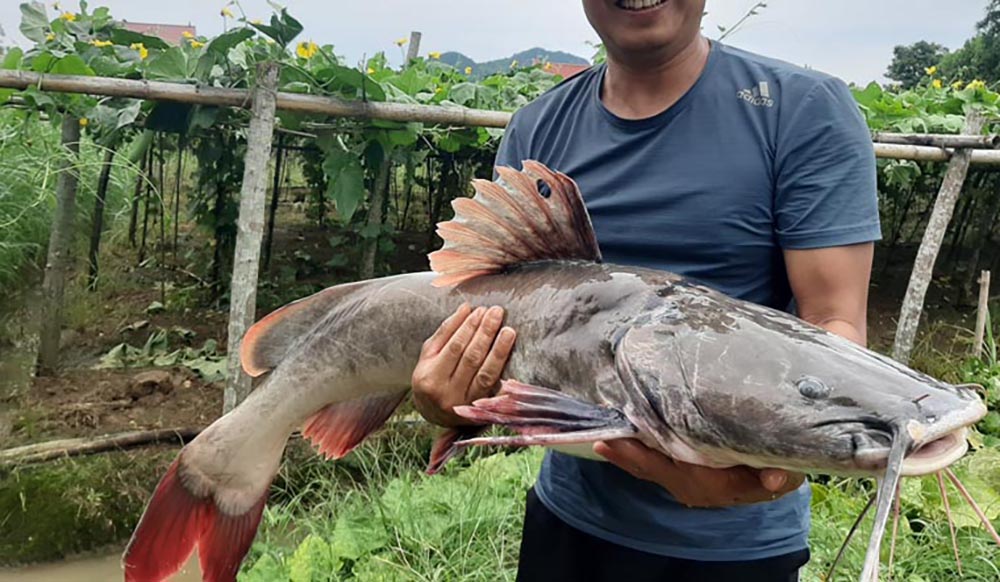
The culinary identity of Daklak would remain unfinished without highlighting its specialty herbs and spices. The region boasts a unique variety of mak khen, also known as "mountain pepper." This rare pepper from the northwestern forests is often used to spice up grilled or stuffed fish dishes. Its distinctive aroma and flavor have earned it high praise both locally and nationally, adding depth to various traditional recipes.
Another notable herb prevalent in Daklak cuisine includes basil, which adds a freshness that complements the rich flavors of local fish and meats. This prized herb is frequently served alongside dishes, allowing diners to mix and match flavors to their preferences.
Notable dishes showcasing these herbs and spices include:
These local herbs and spices not only enhance the flavors of dishes but also connect residents to their environment, emphasizing the importance of utilizing what is locally available and truly reflect the heart of Daklak's culinary soul.
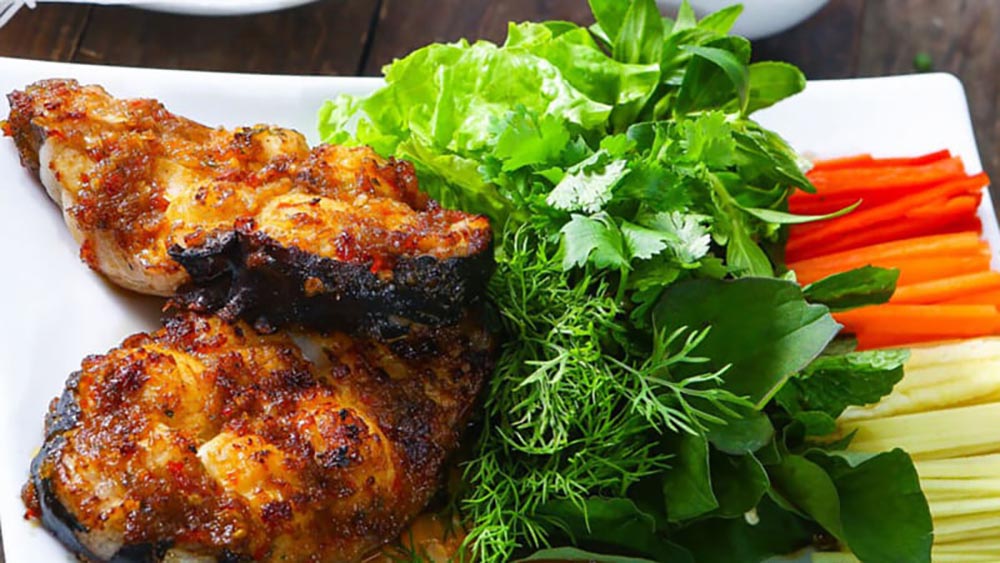
Among the intriguing aspects of Daklak's culinary landscape are its popular cooking methods. With an emphasis on traditional practices, cooking techniques have evolved over time yet still retain their authentic roots. Many methods prioritize the use of fresh ingredients and incorporate the unique characteristics of each ingredient during preparation.
Focusing on grilling techniques and hot pot preparation, these methods play an essential role in the region's food culture and demonstrate the creativity and resourcefulness of the local communities.
Grilling is a celebrated cooking method that holds significant importance in Daklak's food scene. It allows ingredients' natural flavors to shine through while also adding a delightful smoky aroma. The process usually involves marinating meats in a mixture of local herbs and spices before grilling them to perfection creating a beloved combination of taste and texture.
One standout example is Grilled Durian, a unique specialty that reflects the region's boldness in flavor. This dish involves grilling a whole durian over charcoal, resulting in a sweet, hot, and aromatic treat that is adored by locals and visitors alike.
Another popular grilled dish is Ban Don Grilled Chicken. Here, free-range chickens are chosen for their superior flavor raised on local insects, grasses, and rice. The meticulous preparation includes marinating the chicken in specialized blends, including salt, chili, lemongrass juice, and forest honey, ensuring the final product is tender and delicious.
Grilling extends beyond meats in Daklak. Local fish also undergo this treatment, with simple seasonings designed to accentuate the inherent freshness of the catch. This simplicity, combined with the rich culinary traditions of the various ethnic groups in the area, highlights how grilling serves as a connector between culture and cuisine.
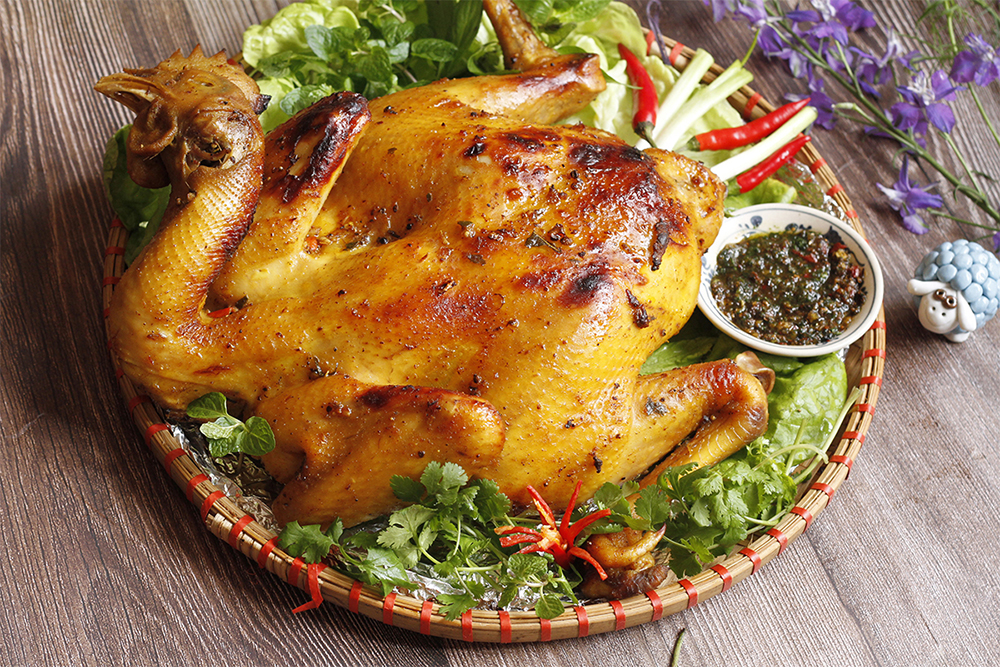
Hot pot is another popular cooking method that creates an incredibly social dining experience. When you sit down for a meal featuring Hot Pot, you engage in an interactive culinary journey where you choose from an array of fresh ingredients to cook, creating a communal atmosphere.
One of the standout hot pot dishes in Daklak is Lẩu Cá Lăng, where local catfish is showcased in a fragrant broth. Diners can immerse various ingredients, such as vegetables and mushrooms, right at the table a satisfying way to enhance the dish's flavors through personal choice. As you simmer ingredients to your liking, the combination of fresh flavors and communal dining creates not just a meal, but a memorable experience.
Additionally, the hot pot is particularly appealing during the hot months, as the cooling qualities of many ingredients lend themselves to a refreshing meal. The variety present in hot pot preparation also allows diners to discover new tastes and preferences, reinforcing the beauty of shared meals.
To fully appreciate Daklak's culinary treasures, it is essential to dive into its signature dishes, which showcase the region's unique culinary practices and rich flavors. These dishes reflect the heart of Daklak, connecting visitors to its cultural heritage and traditions, while catering to a variety of palates and preferences.
Among the signatures are Catfish Hot Pot (Lẩu Cá Lăng) and Fish Noodle Soup (Bánh Canh Cá) both well-loved by locals and flaunting their full-bodied flavors. As we explore these dishes further, the artistry in the preparation and the depth of flavors will undoubtedly leave any foodie smitten.
Catfish Hot Pot, known locally as Lẩu Cá Lăng, is a beloved dish that embodies Daklak's culinary spirit. It takes full advantage of the region’s exceptional freshwater fish catfish, sourced from the Serepok River is particularly prized for its firm texture and rich flavor.
In its preparation, the catfish is usually fried with onions, fresh turmeric, and tomatoes, building a foundation of deep flavors. What sets this hot pot apart is the addition of sour bamboo shoots, which introduce an element of tartness and complexity, complementing the richness of the broth. To create a hearty meal, the hot pot is traditionally served with soft noodles and an array of fresh vegetables, allowing diners to craft their ideal bowl of goodness right at the table.
The communal aspect of enjoying hot pot, along with the experience of cooking the ingredients to one’s preference, adds to the dish's appeal as a must-try in Daklak. Many choose to savor this dish, especially during family gatherings, holidays, or special occasions, reinforcing its association with warmth, togetherness, and celebration.
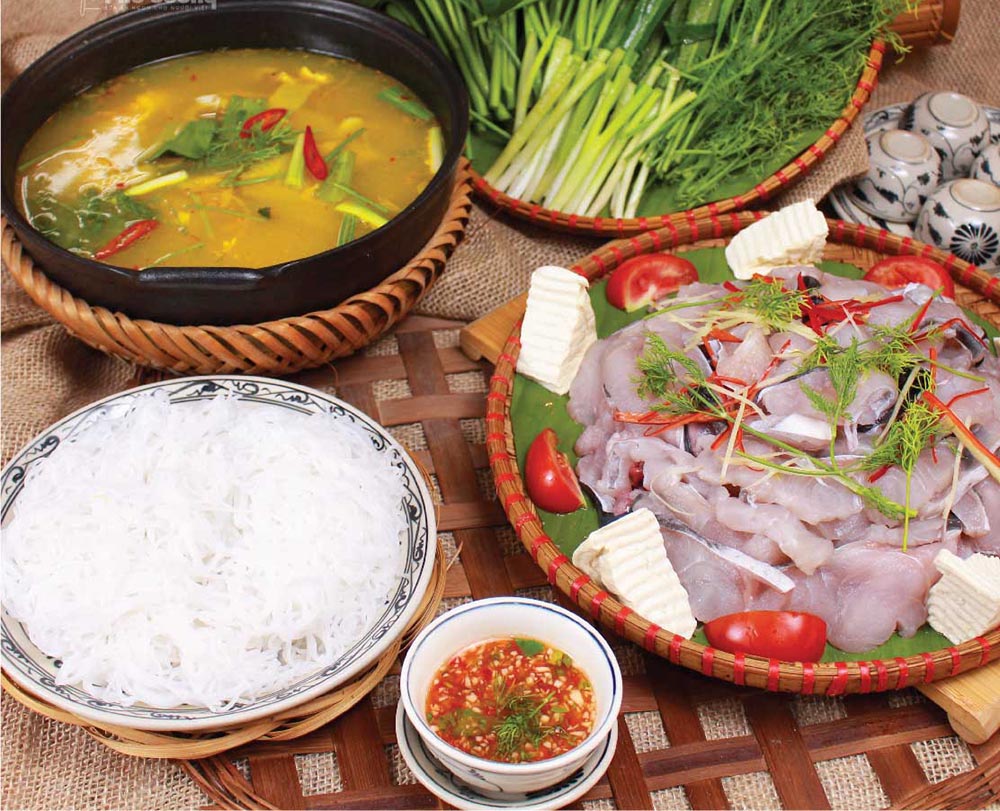
Fish Noodle Soup, or Bánh Canh Cá, is another staple that showcases the rich aquatic life of Daklak. This dish typically consists of thick rice noodles served in a savory broth that marries salty, sweet, and spicy flavors.
At the heart of the dish is its soup base crafted from simmered pork bones and crabs for several hours to extract a profound depth of flavor. This culinary patience pays off when combined with tender, soft-boiled fish fillet, fish loaf, or even fish stomach, creating a multifaceted eating experience. Each bowl is personalized with fresh herbs such as red onions, scallions, and local greens that contribute to an aromatic profile.
Bánh Canh Cá is widely popular, enjoyed by both locals and visitors, and frequently found in street stalls and small eateries throughout Buon Ma Thuot. This dish represents the essence of Daklak's culinary identity, paying homage to the lush rivers and bountiful fishing culture while providing a warm, satisfying meal that resonates with Vietnamese heritage.
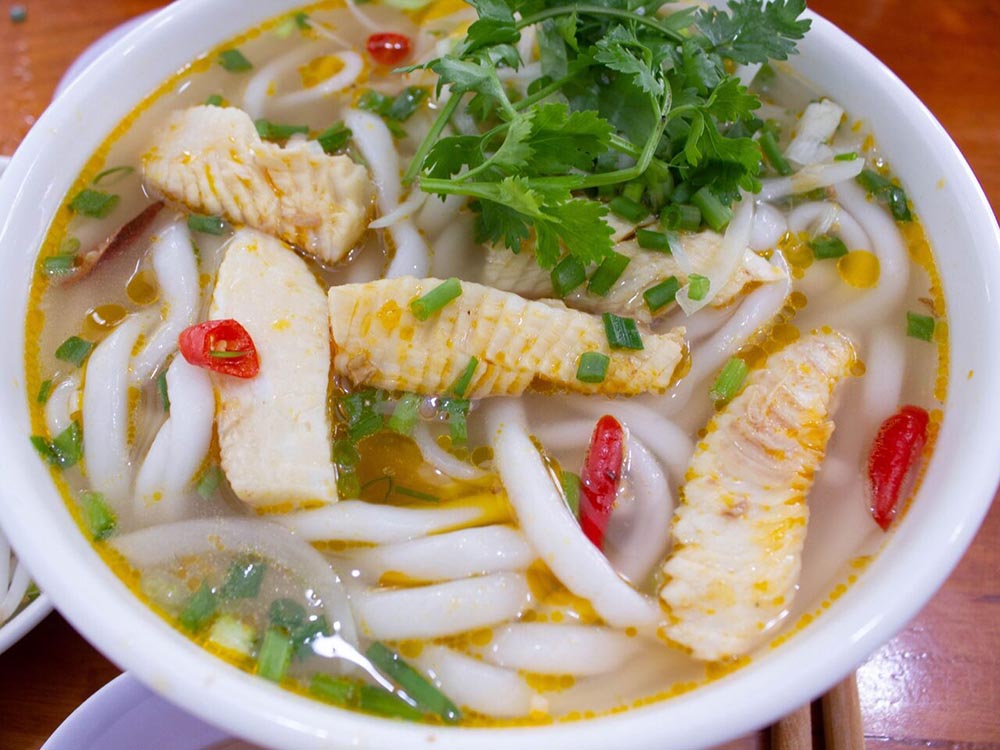
Bún Đỏ, or red noodle soup, is a vibrant signature dish from Dak Lak that deserves exploration. Distinguished by its thick noodles that transition in color from white to red when cooked, this dish utilizes annatto oil which supplies both the rich hue and a unique flavor profile.
The broth for Bún Đỏ is a labor of love, simmered with pork bones and crabs for approximately four to five hours. This prolonged cooking time results in a deliciously aromatic soup base that serves as the perfect backdrop for the dish's garnish. A complex dance of flavors is further enhanced by crab cakes, quail eggs, and fresh herbs, all artfully presented atop the noodles. Fried chopped fat and minced onions add a satisfying crunch, mingling with the subtleties of the broth.
Bún Đỏ can often be found at bustling street food stalls, where eager visitors and locals indulge in this signature dish amidst an exhilarating atmosphere. Its vibrant colors and rich flavors highlight the lifestyle and culture of Dak Lak a true testament to the area’s culinary prowess.
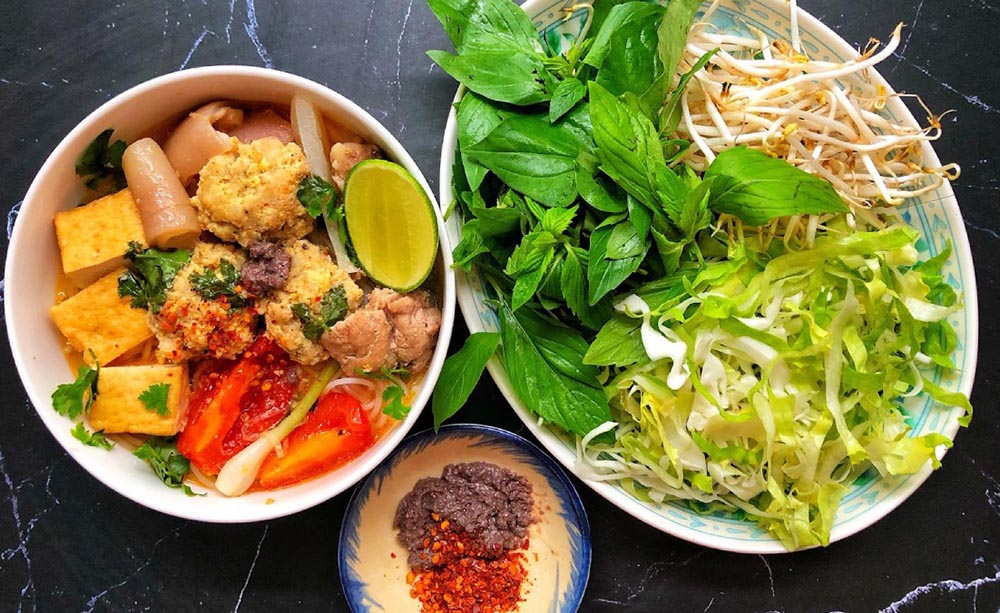
Exploring the culinary landscape of Daklak is as exciting as savoring the food itself. Opportunities abound to find local dishes throughout bustling markets, vibrant street stalls, and enticing restaurants that cater to a diverse clientele.
Each dining destination offers a unique slice of Daklak's culture and cuisine, making it essential for food lovers to venture into various locales and sample everything the region has to offer.
Quyen Quyen Restaurant
Thanh Hung Restaurant
Tai Restaurant
Kicochi House Buffet BMT
As one wanders through Buon Ma Thuot, a plethora of street food stalls and local markets await, offering a mix of traditional snacks and special dishes that evoke local culture.
Ben Thanh Market
Street Food Stalls
Trung Nguyen Coffee Village
For those eager to explore Daklak’s culinary wonders, seeking out specific local dishes at these recommended locations will provide an immersive and delectable taste of this highland province.
In conclusion, Daklak Province is a veritable treasure trove of culinary delights, where local dishes reflect the rich culture, history, and biodiversity of the region. From the artful preparation of Thut Soup to the delightful experiences provided by Bamboo Tube Rice, each dish carries its unique story and taste. The combination of local freshwater fish, specialty herbs, and popular cooking methods like grilling and hot pot preparation come together to create a wonderfully diverse culinary landscape. Visitors are invited to explore bustling restaurants and vibrant street food stalls, immersing themselves in Daklak's unique gastronomic offerings. Whether you are dining at a celebrated restaurant or wandering through a local market, the flavors of Daklak promise to be a memorable part of any culinary journey through Vietnam.